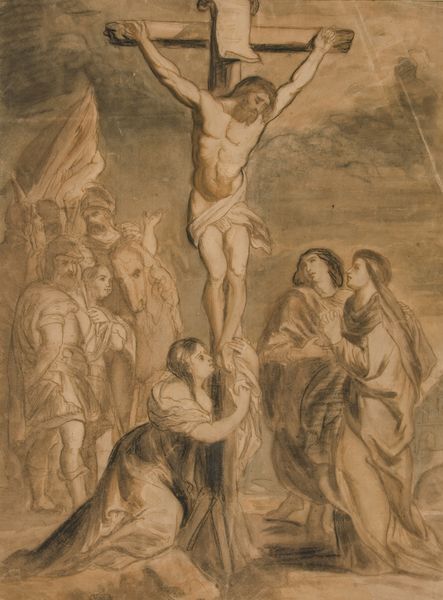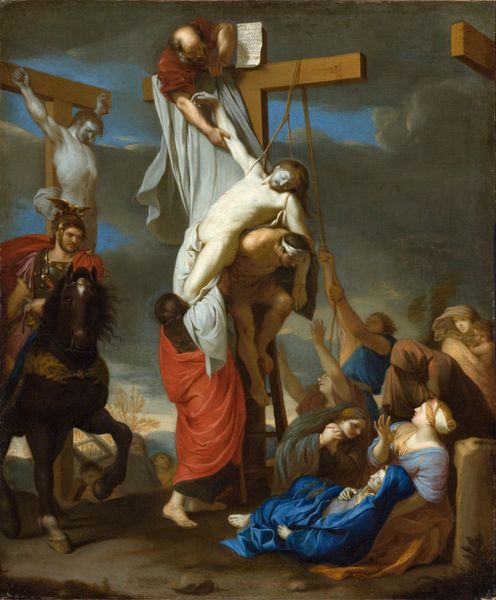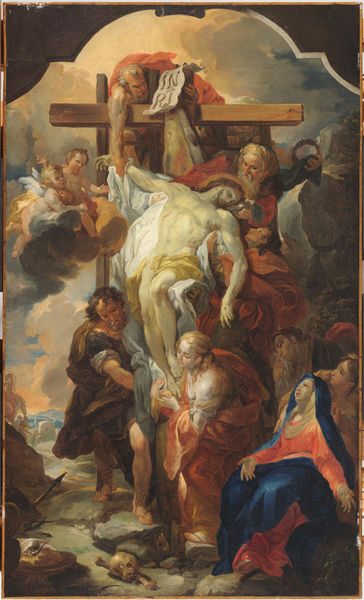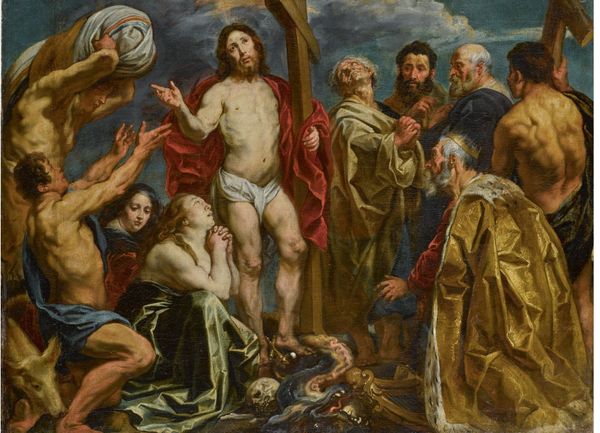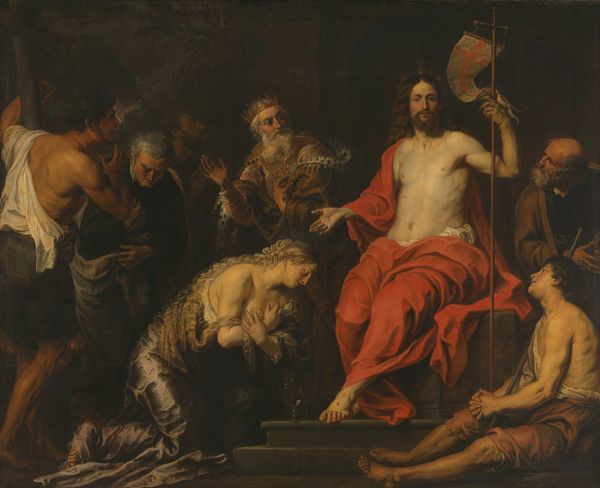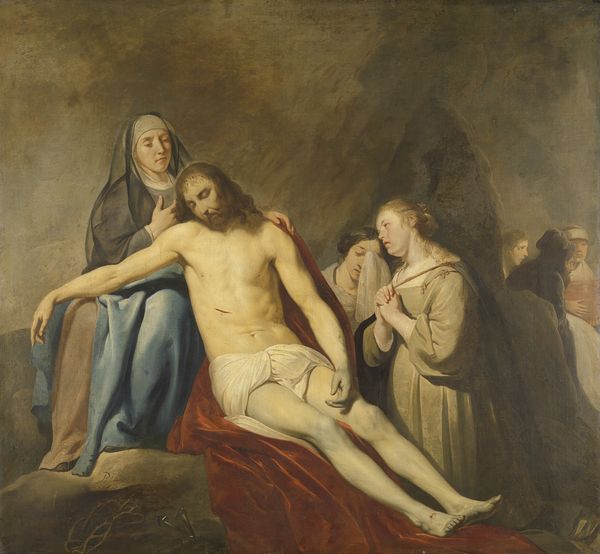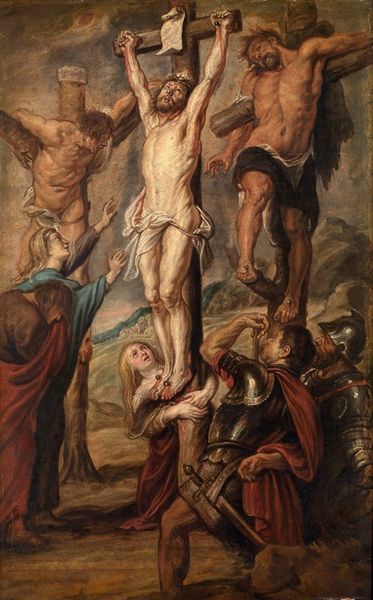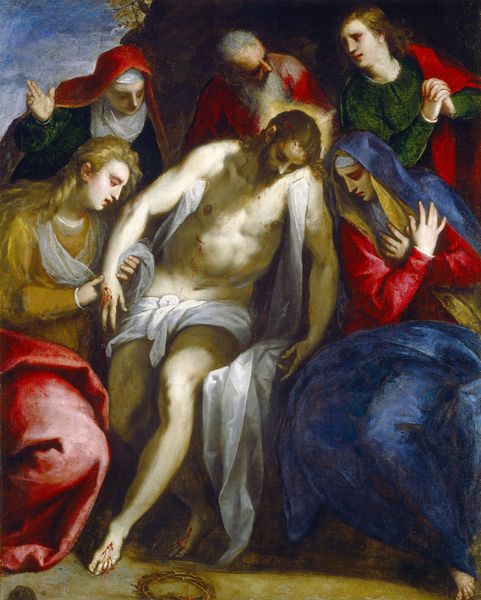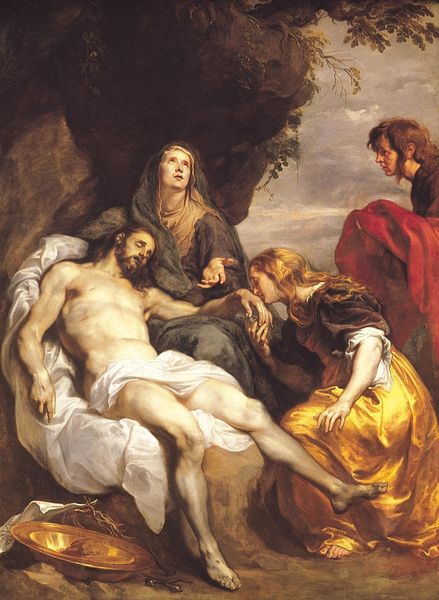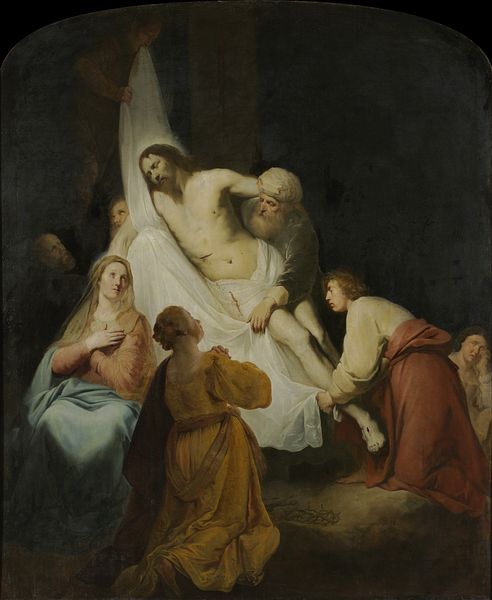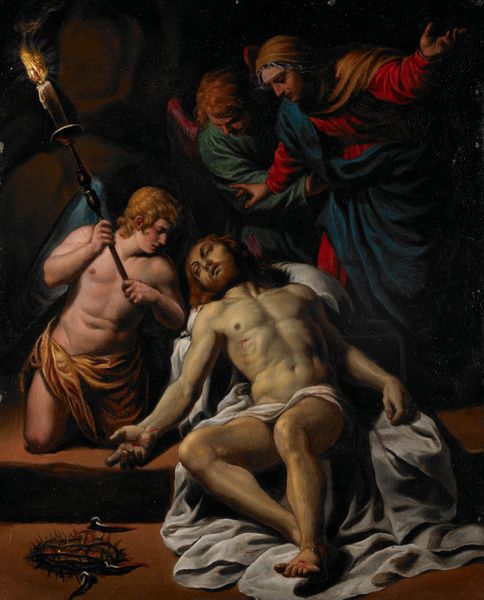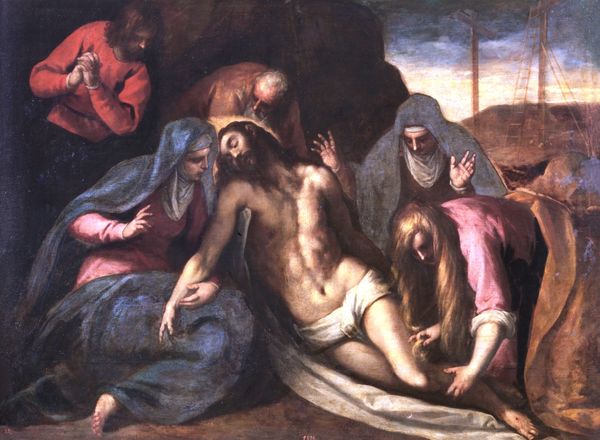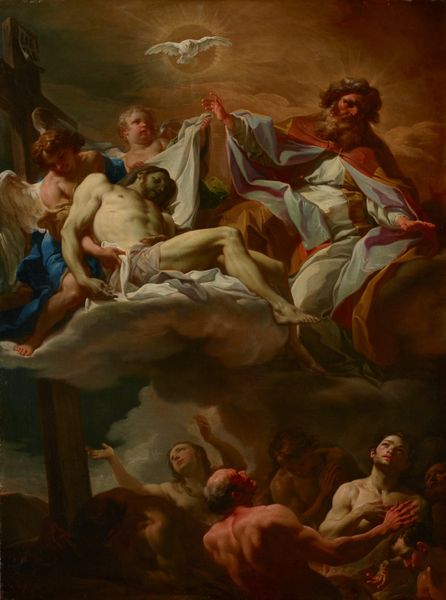
oil-paint
#
baroque
#
oil-paint
#
figuration
#
oil painting
#
history-painting
#
realism
Dimensions: support height 308 cm, support width 223 cm, support thickness 3.5 cm, outer size height 317.5 cm, outer size width 232.5 cm, outer size depth 11 cm
Copyright: Rijks Museum: Open Domain
Editor: Standing here before Gaspar de Crayer's "The Descent from the Cross," painted around 1640 to 1650 using oil, I am immediately struck by the palpable grief radiating from each figure. The almost theatrical display of sorrow feels very staged. What do you make of this portrayal, in terms of its historical context? Curator: This heightened emotionality is indeed characteristic of the Baroque style, intended to engage the viewer directly. But considering its historical setting, remember this piece wasn’t just for aesthetic pleasure. De Crayer, while working for the court, was also deeply involved with religious commissions. Editor: Ah, so this isn't simply a dramatic painting; it has a specific purpose. Curator: Precisely. The Council of Trent, not long before this, emphasized the importance of religious art in teaching and inspiring faith. Works like this were tools. Note the careful depiction of Christ’s body, the expressions of sorrow. Editor: It’s almost propaganda, then? Reinforcing religious doctrine? Curator: In a way, yes, or at least serving as a visual sermon. The painting becomes a powerful statement of faith, aimed at moving the faithful and reaffirming their beliefs within the sociopolitical landscape of the time. Editor: It's fascinating how this artwork operates on both a grand theatrical level and as a more intimate appeal to personal faith, all within a specific historical and institutional framework. It completely reframes how I understand the power dynamics at play. Curator: Exactly. Understanding those power structures is key to unlocking a fuller understanding of its lasting cultural impact.
Comments
No comments
Be the first to comment and join the conversation on the ultimate creative platform.
